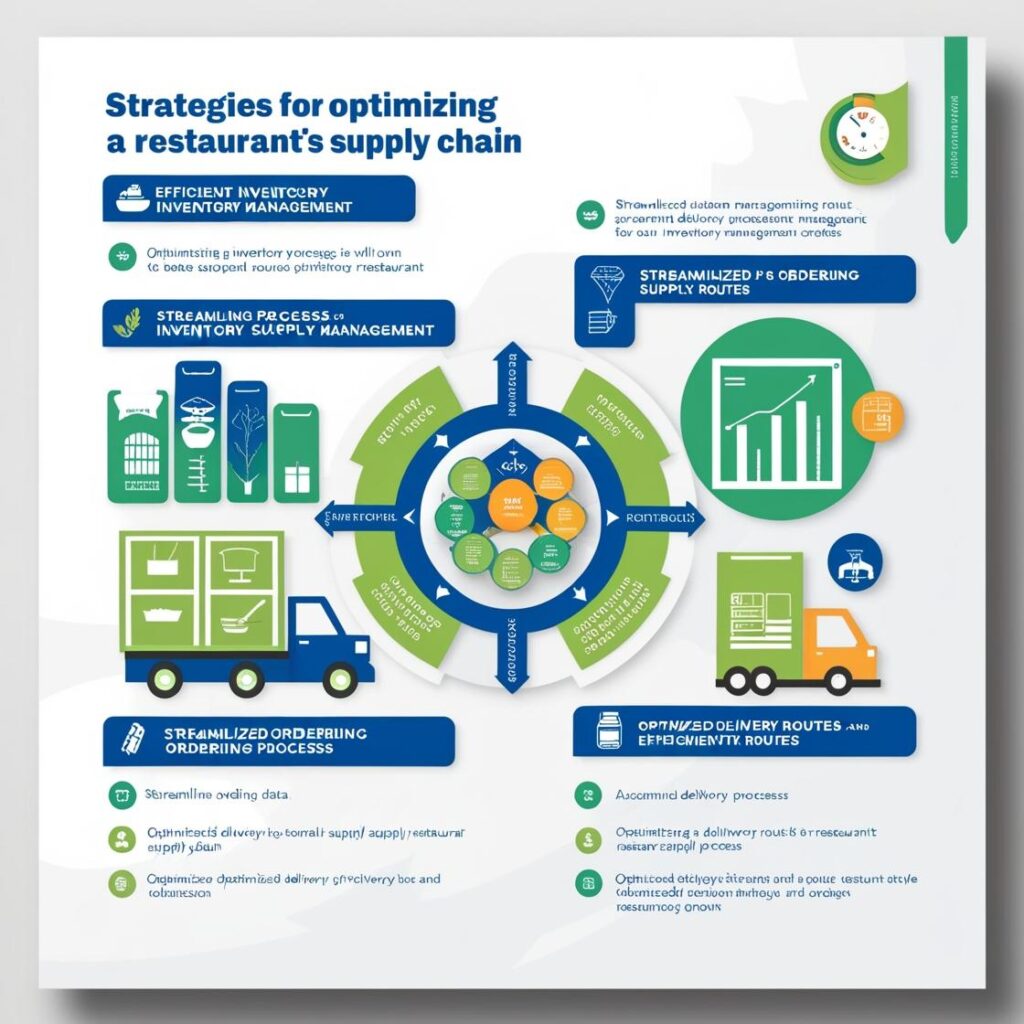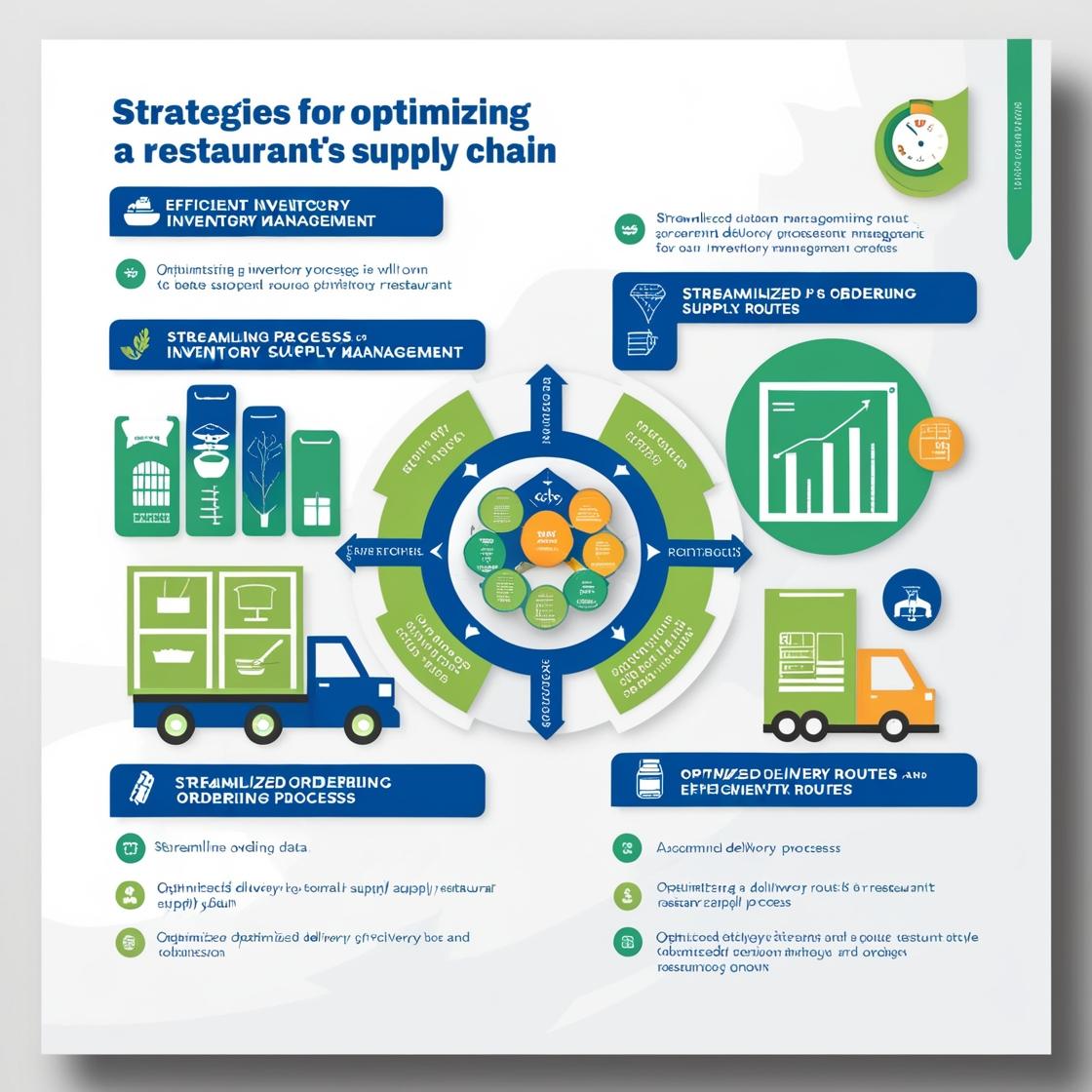Efficient supply chain management is essential for any restaurant aiming to maximize profitability and minimize waste. By optimizing your supply chain, you can reduce food costs, avoid stockouts, and streamline operations, all of which contribute to a better bottom line. In this article, we’ll cover essential strategies for making your restaurant’s supply chain more efficient, sustainable, and aligned with customer demand.
1. Establish Strong Vendor Relationships
A good relationship with reliable vendors is the backbone of a successful supply chain. Building partnerships with suppliers you can trust helps you secure better prices, consistent quality, and timely deliveries.
How to Do It:
- Negotiate long-term contracts: Establishing long-term agreements with suppliers often results in discounted pricing and priority service.
- Communicate regularly: Maintain open lines of communication with your suppliers to stay informed about potential price changes, product availability, or seasonal items.
- Collaborate on sourcing solutions: Work with suppliers to source local or sustainable ingredients when possible, as these can appeal to eco-conscious customers and reduce shipping times.
2. Optimize Inventory Management
Efficient inventory management helps prevent both overstocking and stockouts, ensuring you have the right ingredients on hand without unnecessary waste.
How to Do It:
- Use inventory management software: Implement software that tracks stock levels, generates alerts when items run low, and provides valuable data on usage patterns.
- Set par levels: Establish minimum stock levels for each item based on historical demand, then adjust these levels as needed for seasonal changes or new menu items.
- Conduct regular inventory audits: Perform inventory checks regularly to identify discrepancies, expired items, or excessive waste.
3. Implement Just-In-Time Ordering
Just-in-Time (JIT) ordering is a supply chain strategy that involves ordering only the items you need shortly before you need them. This can help reduce storage costs and prevent food spoilage, especially for perishable goods.
How to Do It:
- Forecast demand accurately: Use historical sales data and seasonal trends to predict demand, enabling you to order only what you need.
- Order smaller quantities more frequently: Coordinate with your vendors to make smaller, more frequent orders, reducing the risk of overstocking.
- Monitor lead times: Stay aware of your suppliers’ lead times, and place orders accordingly to ensure timely deliveries without excessive inventory.
4. Reduce Food Waste with Efficient Portioning and Storage
Reducing food waste is a crucial part of optimizing the supply chain, as wasted ingredients translate directly into lost profits. Efficient portioning and storage practices can help you make the most of every item in your inventory.
How to Do It:
- Standardize portion sizes: Train staff to follow standardized portioning guidelines for every dish, which minimizes waste and ensures consistency.
- Implement proper storage procedures: Use appropriate storage techniques for perishables, such as maintaining ideal temperatures and using first-in, first-out (FIFO) rotation.
- Track waste data: Use waste-tracking software or log sheets to monitor waste and identify patterns, helping you adjust order quantities accordingly.
5. Consolidate Orders to Minimize Costs
Consolidating orders can help reduce delivery costs and simplify inventory management. By ordering multiple items from fewer suppliers, you can often negotiate better rates and avoid unnecessary transportation fees.
How to Do It:
- Bundle items from fewer vendors: Try to source as many products as possible from one or two main suppliers, allowing for larger, less frequent orders and potentially better pricing.
- Take advantage of bulk discounts: Order non-perishable items in bulk when possible, as this often results in significant cost savings.
- Negotiate delivery schedules: Work with suppliers to consolidate deliveries on specific days, helping to streamline your receiving process and cut down on delivery fees.
6. Prioritize Sustainable and Local Sourcing
Sourcing locally and sustainably can reduce supply chain disruptions, improve ingredient freshness, and appeal to eco-conscious customers. Local suppliers often offer fresher products and more flexibility than large distributors.
How to Do It:
- Source from local farmers or markets: Purchasing from local farmers not only supports the community but also ensures fresher ingredients, which can enhance food quality and taste.
- Choose sustainable packaging options: When possible, work with suppliers who use sustainable packaging, reducing your restaurant’s environmental footprint.
- Market your commitment to sustainability: Let customers know about your sustainable sourcing practices. This can boost your restaurant’s image and attract environmentally aware patrons.
7. Use Data to Make Informed Decisions
Supply chain data can reveal trends in demand, seasonal fluctuations, and areas for improvement, helping you make smarter decisions about ordering, pricing, and inventory control.
How to Do It:
- Analyze sales data regularly: Use POS and inventory management systems to track sales trends, helping you predict demand more accurately and adjust orders accordingly.
- Review cost of goods sold (COGS): Regularly evaluate your COGS to determine if adjustments in pricing or portion sizes are needed to maintain profitability.
- Monitor vendor performance: Keep records of vendor reliability, delivery times, and product quality, allowing you to identify top-performing suppliers and hold them accountable.
8. Plan for Seasonal Changes and Supply Chain Disruptions
The restaurant industry is often affected by seasonal changes and supply chain disruptions. Planning ahead can help you avoid stockouts and maintain consistent quality, even during challenging periods.
How to Do It:
- Plan menu changes based on seasonality: Adjust your menu to feature seasonal ingredients, which are often fresher, more affordable, and easier to source.
- Keep a list of backup suppliers: Identify alternative vendors for essential items, so you have options if your primary supplier faces delays.
- Build an emergency inventory fund: Set aside funds for emergency inventory purchases, which can help cover unexpected costs due to supply chain disruptions.
Conclusion
An optimized supply chain is key to a successful and profitable restaurant. By building strong vendor relationships, using data to make informed decisions, and planning for seasonal changes, you can improve efficiency, reduce costs, and ultimately enhance the customer experience.
Need help streamlining your restaurant’s supply chain? Contact Restaurant Secret Hacks or download our ebook for in-depth insights.




